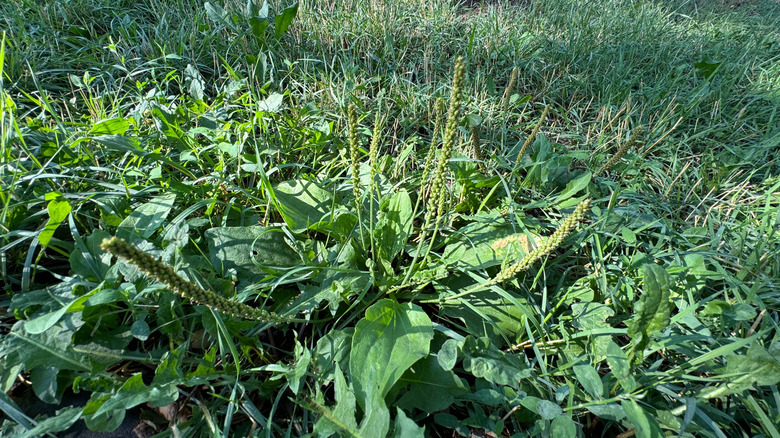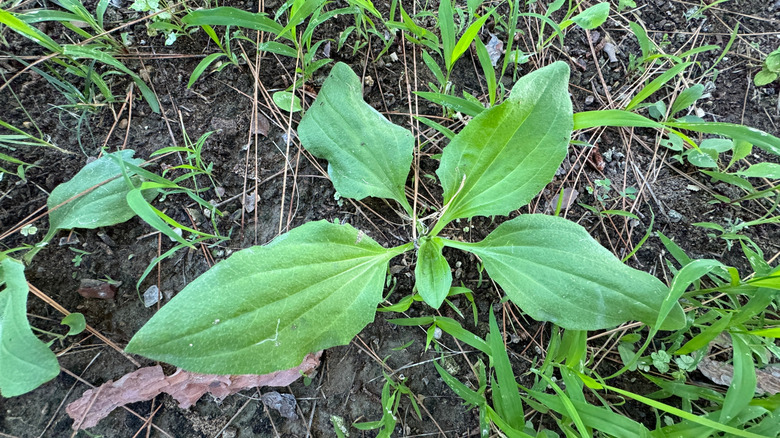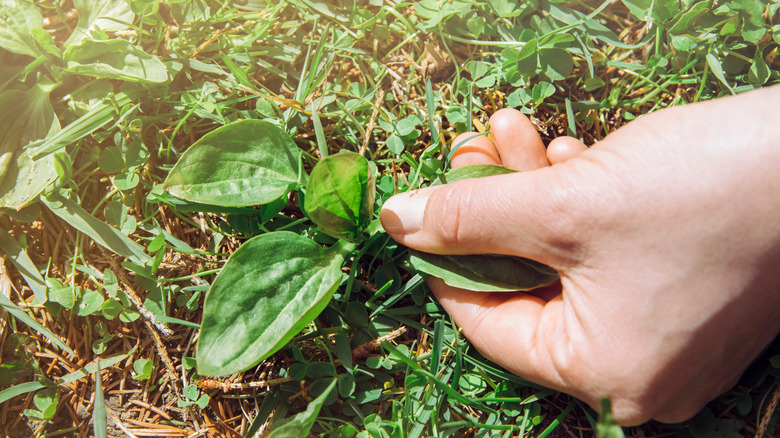Why Plantain Weeds Keep Coming Back In Your Yard (& What To Do About It)
Plantains (Plantago spp.), like the broadleaf plantain or buckhorn plantain, are some of the most common and persistent weeds found in lawns, gardens, and even growing through the cracks in sidewalks or driveways. If you've ever battled the plant, you might feel like there's no way to keep the weed out of your lawn permanently. It's hardy, adaptable to most soil conditions, and tolerates foot traffic as well as you wish your lawn would.
If you feel like you've tried everything, know that there are a few reasons plantains keep returning in spite of your best efforts. For one, plantains can take hold in lawn conditions that keep the turf from thriving. Also, the nature of this weed's leaves makes mowing ineffective, while hand weeding often leaves behind parts of the root that allow the plant to grow back.
While these characteristics make plantain difficult to eradicate, it's not impossible. The key is to use a multi-pronged strategy that includes fixing the underlying issues that allow plantain to thrive, preventing the weed from going to seed, and making sure you remove the entire root when weeding the lawn.
Reasons plantain weeds keep popping up in your yard
It can be frustrating to watch plantains or other weeds keep popping up in your lawn, but their presence is a good indicator of an underlying problem. Healthy turf is dense and strong enough to suppress most weeds; conversely, weeds thrive in suboptimal growing conditions that keep your lawn unhealthy. Plantains, specifically, are one weed you'll see when your lawn has poor drainage. While they can thrive almost anywhere, plantains have an upper hand over your grass in compacted, wet soils. So, if they're out-competing your lawn in a certain area, it's worth checking the soil for compaction and excessive moisture.
Additionally, the leaves on this common species grow low enough to escape your lawn mower. Even if you could mow it, the weed can regrow from the root. The same thick, fibrous root system that helps plantains survive in compacted, wet soil also makes it hard to remove the plants by hand completely. Unfortunately, leaving even a piece of root in the soil can be enough for the weed to fully regrow.
Another reason plantains might keep returning despite your best efforts to eradicate them is their seeds. Depending on which species is in your yard, a single plantain can produce as many as 20,000 seeds — and it doesn't even need insects, since the plants are wind-pollinated. That means a single missed plantain weed could repopulate your lawn with countless new plants.
How to get rid of plantain weeds for good
To get rid of plantains for good, start by fixing any compaction or drainage issues that are allowing them to thrive. You can do this by aerating your lawn to relieve compaction, then topdressing it with compost to improve drainage and overall soil health. While it will take multiple compost applications to enhance your soil, there are still steps you can take in the short term to prevent plantain weeds from taking over.
For small patches or occasional plants, stick to a consistent schedule of hand-pulling to get rid of new plants as they appear. For larger plantain patches, focus on cutting down the stems and leaves through spring and summer often enough that the plants are unable to produce seed. Come late summer or fall, apply a broadleaf herbicide. Since fall is when plantains transport nutrients into their roots for winter, this is the best time to stop these lawn weeds because they'll carry the herbicide into their roots, too.
As you pull up or kill a plantain weed, make sure you're replacing it with desirable plants. Bare soil will just invite new weeds to colonize the area. If soil issues still exist, choose plants that are just as well-adapted to those conditions as plantains. There are many flowering plants that thrive in soggy soil, so you can fill the area with pretty flowers or attractive trees and shrubs that are better equipped to compete with plantains.


